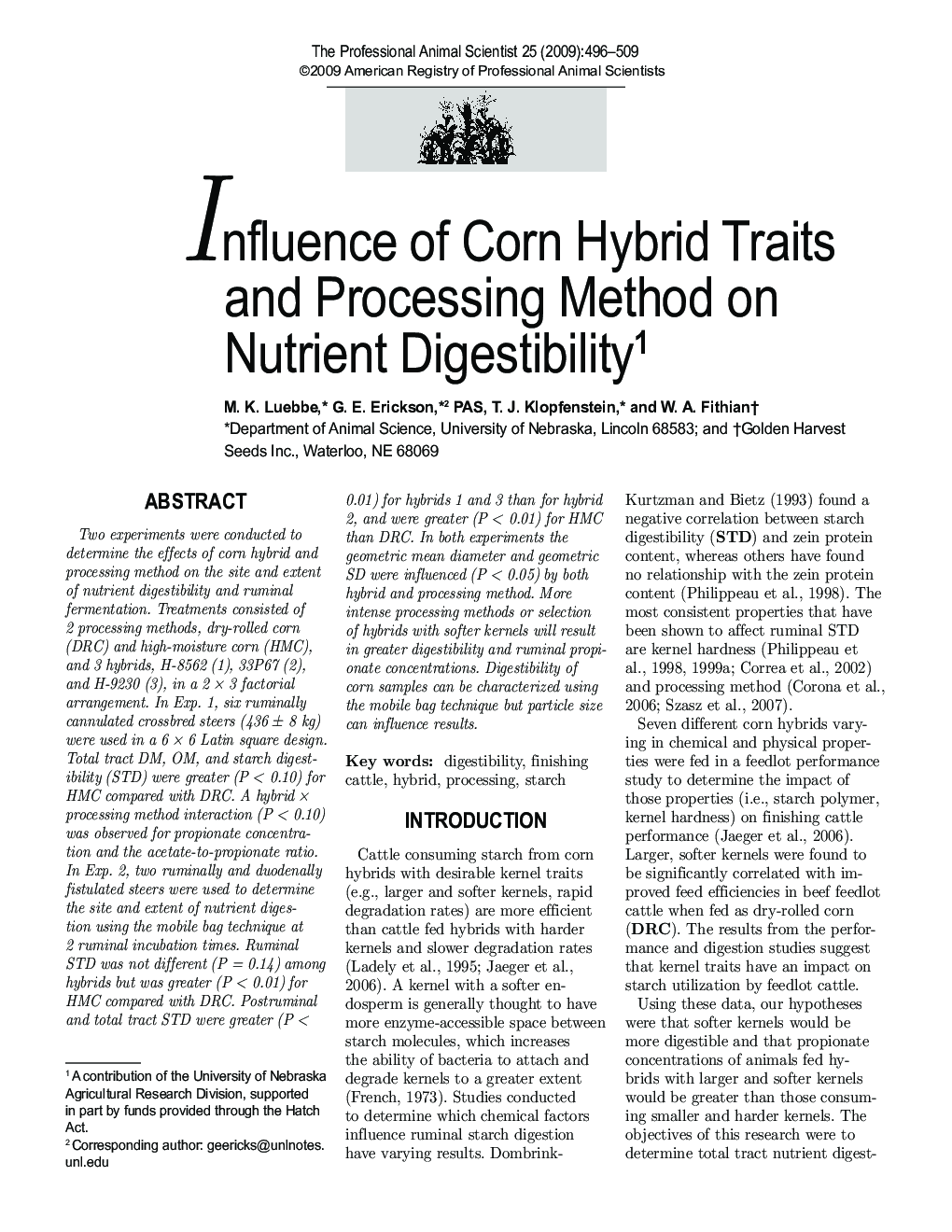| Article ID | Journal | Published Year | Pages | File Type |
|---|---|---|---|---|
| 2454190 | The Professional Animal Scientist | 2009 | 14 Pages |
Abstract
Two experiments were conducted to determine the effects of corn hybrid and processing method on the site and extent of nutrient digestibility and ruminal fermentation. Treatments consisted of 2 processing methods, dry-rolled corn (DRC) and high-moisture corn (HMC), and 3 hybrids, H-8562 (1), 33P67 (2), and H-9230 (3), in a 2 à 3 factorial arrangement. In Exp. 1, six ruminally cannulated crossbred steers (436 ± 8 kg) were used in a 6 à 6 Latin square design. Total tract DM, OM, and starch digestibility (STD) were greater (P < 0.10) for HMC compared with DRC. A hybrid à processing method interaction (P < 0.10) was observed for propionate concentration and the acetate-to-propionate ratio. In Exp. 2, two ruminally and duodenally fistulated steers were used to determine the site and extent of nutrient digestion using the mobile bag technique at 2 ruminal incubation times. Ruminal STD was not different (P = 0.14) among hybrids but was greater (P < 0.01) for HMC compared with DRC. Postruminal and total tract STD were greater (P < 0.01) for hybrids 1 and 3 than for hybrid 2, and were greater (P < 0.01) for HMC than DRC. In both experiments the geometric mean diameter and geometric SD were influenced (P < 0.05) by both hybrid and processing method. More intense processing methods or selection of hybrids with softer kernels will result in greater digestibility and ruminal propionate concentrations. Digestibility of corn samples can be characterized using the mobile bag technique but particle size can influence results.
Related Topics
Life Sciences
Agricultural and Biological Sciences
Animal Science and Zoology
Authors
M.K. Luebbe, G.E. PAS, T.J. Klopfenstein, W.A. Fithian,
